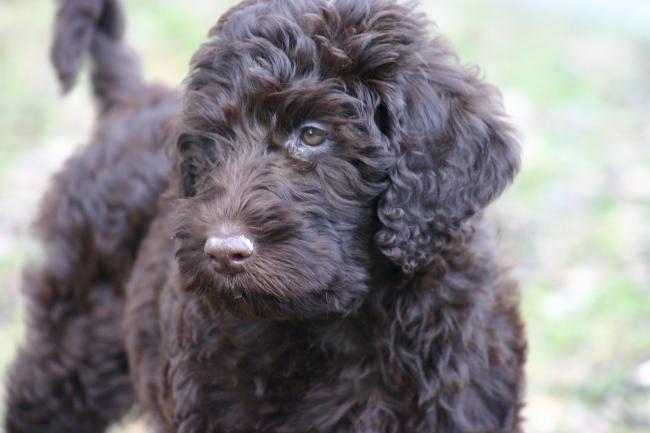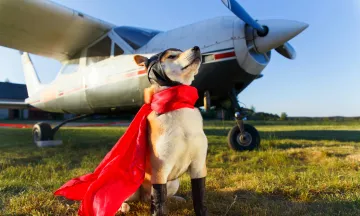Most dogs change their outfit to match the weather: just like us, they swap their summer coat for a winter one. This may also be accompanied by additional shedding. While molting is perfectly normal, there are ways to make life more comfortable for your four-legged friend. With that in mind, we've prepared 5 questions and answers to ensure optimal care of your dog's coat.
1. What is 'shedding'?
Most dogs shed throughout the year. This peaks in spring and autumn, when they develop a new undercoat and their old, dead fur falls out. If your dog is happy for you to do so, you can remove any excess fur during these periods by brushing. For smooth-coated dogs, shedding is relatively straightforward. For dogs with thick, wiry coats, such as schnauzers and the majority of terriers, it can be a little more complicated. Ideally, their bi-annual change of coat should receive the helping hand of a dog groomer. An experienced dog groomer will deftly 'pluck' or 'strip' away the 'mature' fur and in turn make way for their new winter or summer coat.

2. Should I brush my dog?
We recommend brushing dogs with long or curly fur throughout the year. Long coats can become extremely matted, tangled and dirty. Check your dog's fur regularly and take care to remove any tangles or dirt. And cut away excess matted fur from their paws, ears and beneath the tail: we all know just how unpleasant it is when your pooch gets something stuck in this particular region ;-)
Although brushing isn't essential for smooth-haired dogs, it can be beneficial, especially if his or her coat is looking a little dull, dirty or contains excessive amounts of loose fur. Doing it too often and too vigorously, however, and you'll only encourage more shedding. Mother Nature ensures that your dog's coat remains in tip top condition, so go easy on the brushing!

3. How should I brush my dog?
This is dependent on the type of coat. For smooth-haired dogs a soft or rubber brush is sufficient, whilst for dogs with long or wiry coats it's best to use a sturdier comb or brush. A professional dog groomer can provide advice on the most suitable type of brush for your dog. However, before you begin brushing your canine companion with abandon, allow him or her to first get accustomed to it by gently stroking behind the ears and on the back and legs. If he or she appears relaxed, then pick up your brush. Start with the easy places, such as the neck and flanks, and use a reassuring voice throughout. If your dog remains calm, then progress to the more difficult spots such as armpits, paws and tail.
4. Do I need to wash my dog?
In principle, dogs don't need to be washed, unless of course they're extremely dirty. If your pampered pooch enjoys the odd mud bath or likes to roll in smelly things, then an occasional shower will certainly be unavoidable. Always use a dog shampoo, as ordinary 'people' shampoo is too strong for your dog's sensitive skin. Rinse your pooch thoroughly to remove all traces of shampoo and then dry them off with a towel.

5. My dog has a problem with his or her coat. What now?
Dogs can suffer from a variety of different coat and skin problems, such as bald patches, scaling, itching and excessive fur loss. Combing or washing in these cases is unlikely to help: in fact, it may even make it worse. The underlying cause of skin complaints can include food allergies, infection, thyroid disease, fungi, parasites or flea infestations. It's therefore extremely important to determine exactly what's wrong with your dog before taking any remedial action. Always take him or her to a vet for a professional examination.
One final tip: beautiful fur is nourished from within. A happy, healthy and fit dog will generally boast a healthy coat. Pay close attention to what you feed your dog: provide them with a balanced diet that contains plenty of animal protein and fats, and as few unnecessary additives as possible. Invest in educating yourself about your dog and what he or she needs to remain healthy and happy. That way you'll be able to admire that gorgeous, glossy coat and enjoy your dog's loyal companionship for many years to come!






